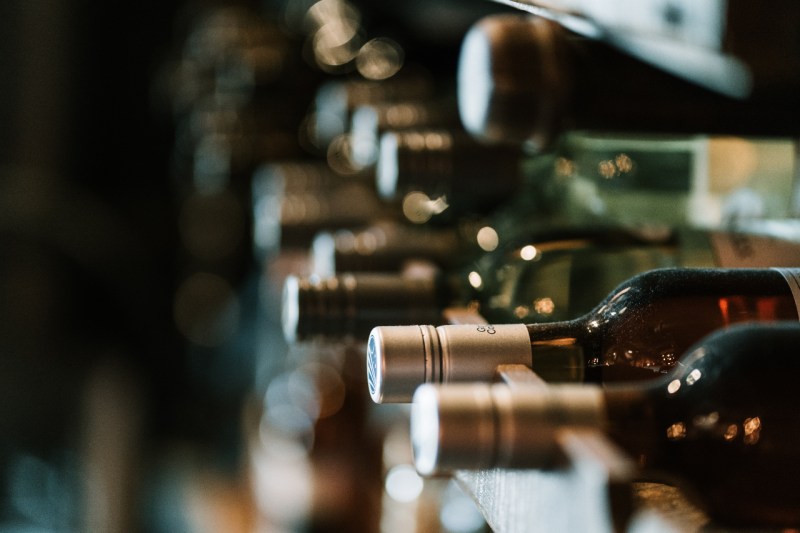With wine labels, the prose is not always straightforward. In fact, there are nouns, numbers, and symbols you might not be fully familiar with. But it pays to have some context, as the last thing you want to do is shell out your hard-earned money for a wine from the wrong American Viticultural Area or made in a way that doesn’t agree with your dietary restrictions or environmental stance.
You can probably locate the alcohol content or even the grape varieties that go into the blend, but can you pick out the region? How can you tell if it’s made from organically farmed grapes? Did they add sulfites? These are valid questions, especially in an age where we very much want to know about the companies we fund, let alone what exactly we’re putting into our bodies. Keep reading to learn how to read a wine label.

So, let’s clarify a bit of the fuzz with some basics.
LIVE Certified

A designation for wines in the Pacific Northwest, LIVE stands for Low Input Viticulture and Enology. Look for the above symbol, usually positioned in the corner of the label. This is an all-around sustainability effort, focusing on environmental and social health. LIVE-certified wineries limit their emissions, promote biodiversity in their vineyards, conserve natural resources, support workers’ rights, and more. And it’s third-party certified, so there’s no cutting corners.
Salmon Safe

Salmon Safe is similar to LIVE in that it concerns West Coast wineries, including producers in British Columbia, Washington, Oregon, and California. This makes sense, given that’s where major salmon runs occur. Essentially, if you see a logo on the label, you’re buying a wine that adheres to salmon-friendly farming in the vineyard. This is an important act of sustainability as whatever enters the soil typically accumulates via runoff and enters the nearest watershed, where the salmon live.
Sulfites

The s-word has been dealt plenty of flack lately and is the subject of a lot of misinformation. What are sulfites? In wine, it’s a naturally occurring compound that’s the byproduct of fermentation. What most people are really after here is whether or not the producer has added sulfur during the winemaking process, a pretty standard move to prevent spoilage, among other things.
With the rise of lower-intervention and “natural” winemaking, it’s become fashionable to not add SO2. Some people have a sulfite aversion, too, but should also note that a lot of processed foods contain way more sulfites than, say, a bottle of wine (white or red). The phrase you’re looking for, if sulfites aren’t for you, is “no sulfites added,” which will likely be at least in the small print of the back label.
AVA

The appellation is a pretty easy one to find on most labels, often listed on the front in the same general area as the vintage, vineyard designation, or varietal. What’s perhaps more important to know is what it means to list such a thing.
Legally, a wine can only mention the AVA if all of the fruit used in the creation of said wine was grown within the boundaries of the appellation. In the States, we’re quickly approaching 300 AVAs, so it’s an excellent thing to pay attention to, especially if you’re a fan of the concept of terroir in wine.
Wording

When learning how to read a wine label, be aware of the wording on a label, as it can reveal a lot about what’s in the bottle. Generic terms like “wine of California” can be misleading and refer to a wine with no real sense of place (let alone identifiable varietal makeup or even vintage).
Look for things that are important to you. For example, if you appreciate lower-impact farming methods, look for terms like biodynamic or dry-farmed. If sustainability is your thing, look for more than just that catch word, like regenerative viticulture.
Organic and similar symbols

Certified organic wineries can be hard to come by in the States, as the criteria tends to be more suitable for other kinds of agriculture (and it can be prohibitively expensive to get the formal certification). But there are other things to look for.
There are now obvious symbols denoting things like green certified, demeter certified biodynamic, and California certified sustainable, among others. Abroad, the systems are a bit ahead of ours (the industry is older), so look out for things like the green leaf (an organic designation for EU wines, shown above) and similar from other parts of the wine map.
Denomination of Origin

The denomination of origin (DO) is usually pretty easy to identify, as there’s a lot of marketing cache involved and producers seem generally proud to wear the geographical details of the wine on their sleeves. Most major DOs, like Chianti or Rioja, have eye-catching logos now that are either part of the label or their own necktie or sticker. Each region has its own production standards, so it pays to look into those a bit more to know what you’re getting involved with.
These are just a few things to look out for. As always, chat up your local wine pros and do some homework online before padding your cellar. Also, be sure to check out producer websites as they tend to have extra info and trade sheets that afford all the technical info one could want. While we’re on the topic, check out one wine terminology guide to stay in the know.



